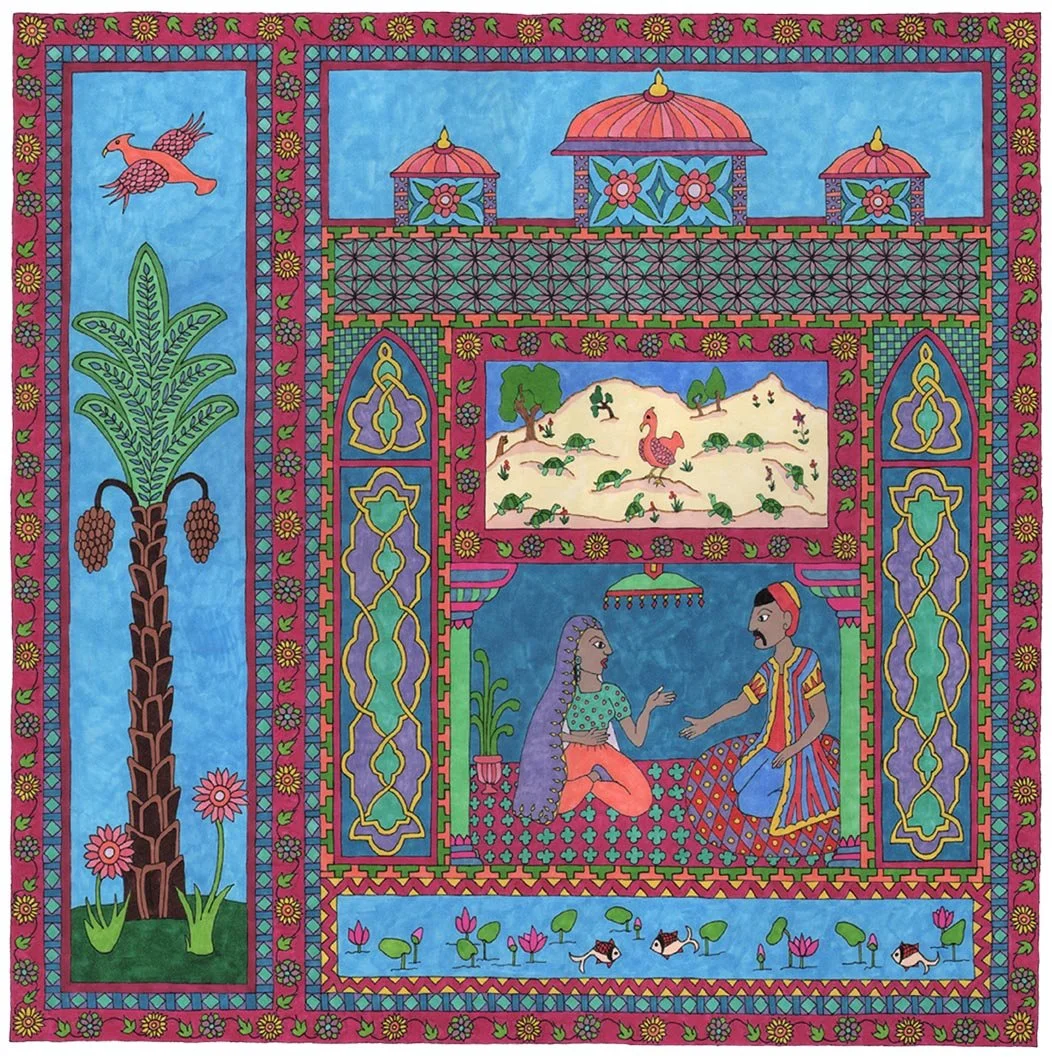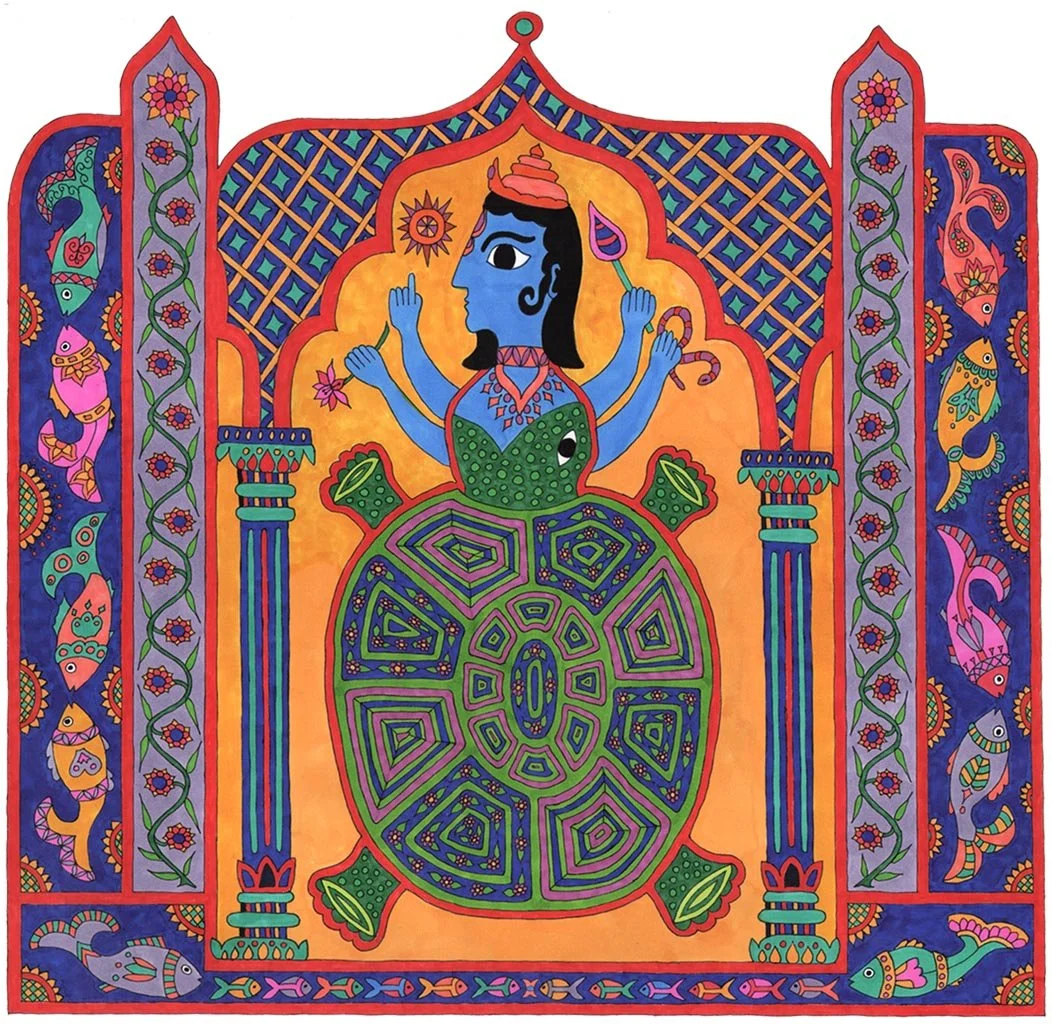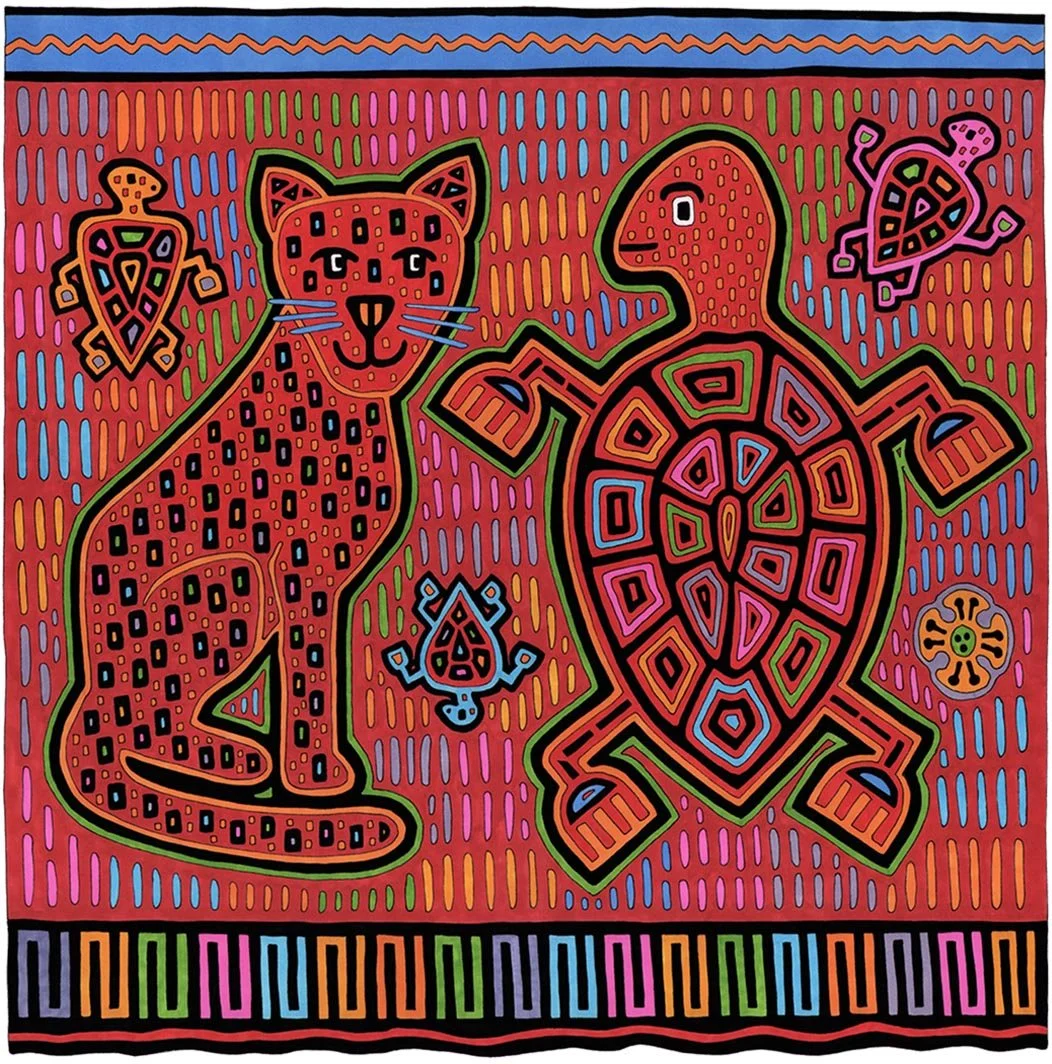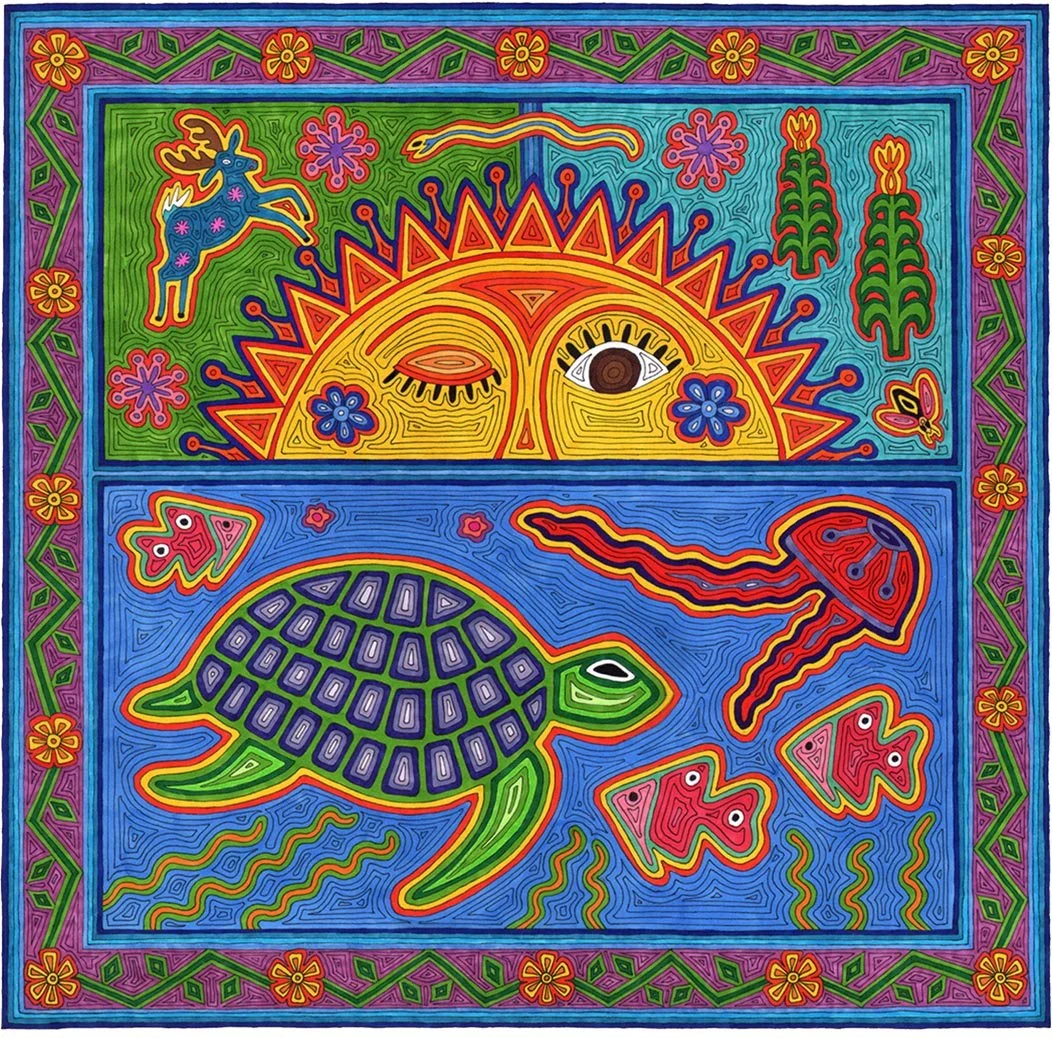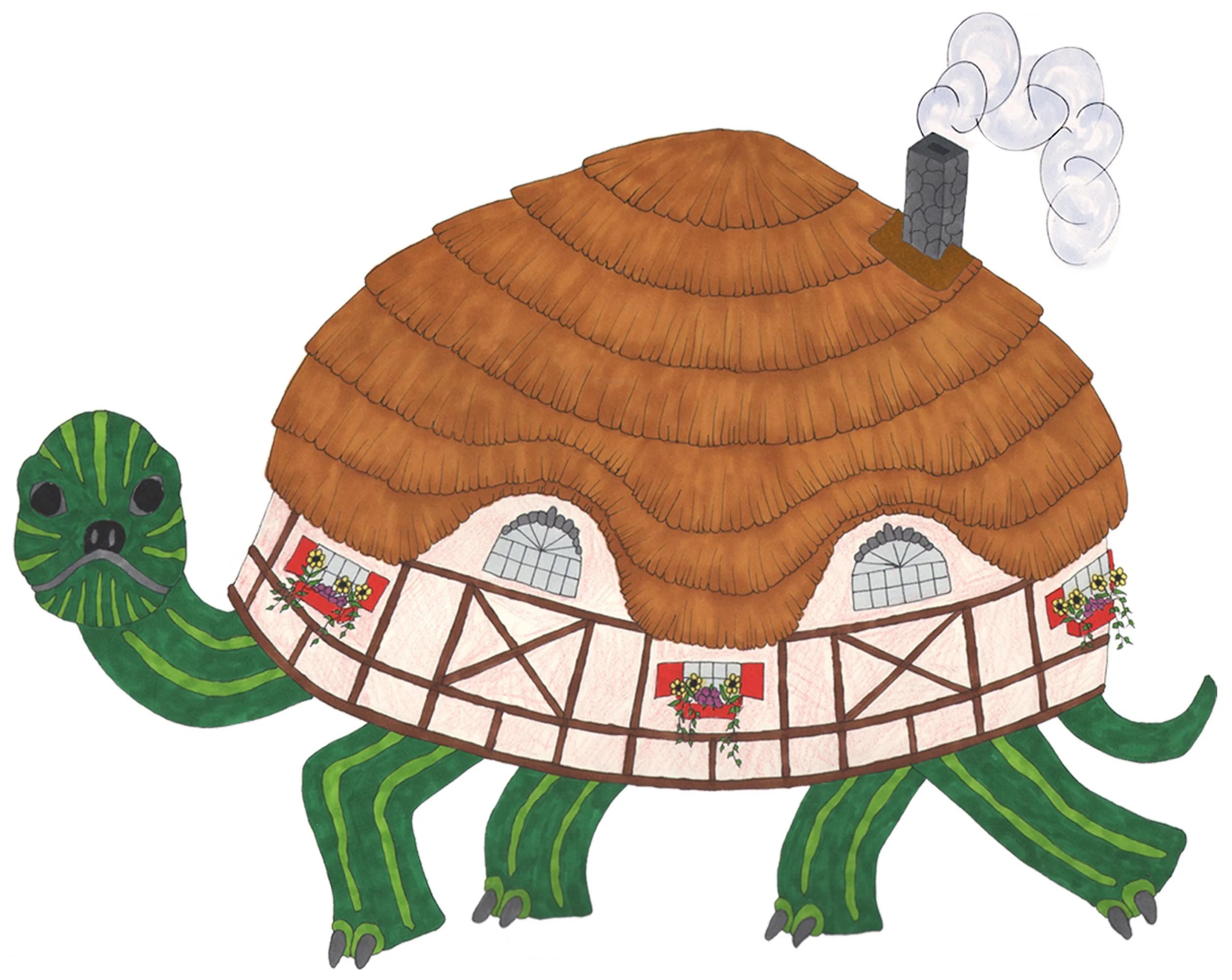As a Third Culture Kid
I never felt I belonged anywhere.
American Sociologist Ruth Hill Useem coined the term Third Culture Kids (TCK) in the 1950’s and I only learned the term when I was in my 50s.
As described in Shades of Noir, “ Brought up in another culture or several cultures, TCK’s feel ownership in none…they all share a common trait of having spent a significant period of time in one or more culture(s) other than [his/her/their] own, thus integrating elements of those cultures and their own birth culture, into a third culture’ (Eakin, 1998).
As I learned more about TCKS it explained so much about my early nomadic years and my art style when I started drawing in my 40’s. I draw mostly animals in a style I call World Folk Art. It's like World Music, but for the eyes. I research how the animal lived in the wild, stories and symbolism ascribed to them by nearby Peoples and their art, textiles, clothing, body art, and architecture. I revel in how the human family everywhere loves to decorate themselves and their surroundings.
Turtles are my most recent art project. I've drawn over thirty of them, all from different regions and in the styles of different People. I will share five of them with you to show how being a TCK has affected me and defined my art.
When I was four my family moved to Saudi Arabia. My father worked for ARAMCO as a pilot bringing oil tankers into the Gulf to fill up with Arabian crude. Even though we lived behind a fence we often explored nearby locales and ancient sites. I was fascinated by intricate Islamic tile work and gorgeous architecture.
Scheherazade's The Heathcock and the Tortoises -Middle Eastern - Among the tales attributed to Scheherazade in 1,001 Nights, is of a heathcock who rests on an island populated by tortoises. They come to adore the bird who clips his wings for them, agreeing to stay with them always. Not good - a wily weasel makes easy prey of the bird. Predating Jesus, the heathcock forgives the tortoises as he is dying.
As an early teen traveling in Nepal, India and Cambodia with my mother I was surrounded by brilliant colors, terraced gardens, hand-woven textiles, temples without one speck of uncarved space, and ornate jewelry. Even though I was submerged in Mad magazine and wondering if we were there yet it must have soaked in. It was in Nepal I saw my first hippie, a young woman traveling alone, and decided that was what I wanted to be when I grew up.
Kurma, Vishnu's Second incarnation - In Hinduism, Vishnu connects and protects. In his many incarnations he is responsible for holding creation together and safeguarding it from obliteration by evil forces. As Kurma, he rescues creation by tricking demons, thus winning a massive war between good and evil.
When I was in 7th grade, looking forward to going to Beirut for school the next year, we abruptly moved to Panama where my father became a Panama Canal pilot. It was strange to be surrounded by so much greenery. It was there that I developed a love for the Guna (formerly Kuna) People. My first love was the mola, a hand sewn, brightly colored, layered fabric panel used by Guna women for the front and back of their blouses. All of my art has a mola feel to it. Then I explored their culture. I was so aware of their fiercely guarded privacy that I never even visited their home on the San Blas Islands.
Tortoise and the Leopard - Guna People of the San Blas Islands off the coast of Panama - The story of the Tortoise and the Hare is told around the world, with a wide array of morals and actors. The Guna highly value getting along and their version includes a second part to the story, resulting in a tie finish.
I realized this was a self portrait after I completed it. The sun is my awakening brain after a protracted illness, the deer and corn symbolize the abundance of loving people, food, and wellbeing in my life. Below the surface is a whole world running deeply. It is rich with life experiences, bubbling up to the surface.
Visions of Discovery - Huichol People of Central Mexico - Dreams and peyote visions are recreated in yarn art to record and better understand their meaning. Turtles assist rain goddesses in stewarding underground waters.
When I recently found out about Third Culture Kids I was surprised and comforted by how much the description fit me. I had trouble fitting in when I came to the States for college. My understanding of body language, my sense of time, and my smaller personal bubble all set me apart. I didn't know popular culture. Also, I couldn't share my stories because they seemed fabricated to folks who'd lived within the same cultural space all their lives. World Folk Art is now my way of sharing - it is my side of an ongoing conversation I am engaged in with the many cultural influences that have defined me.
What is home? In a sense, I am like that Greek turtle living in an English Tudor cottage. All of these influences travel with me. I'm now settled and have a full life, with a TCK spouse and three children who love to travel. Like Zeus's turtle I can make a home wherever I am.
No Place Like Home - In a Greek story, Zeus invited tortoise to his wedding. She demurred preferring her humble home to Zeus’ lavish nuptials. Zeus became enraged at her absence. From then on, he declared, she would carry her house with her wherever she went.
